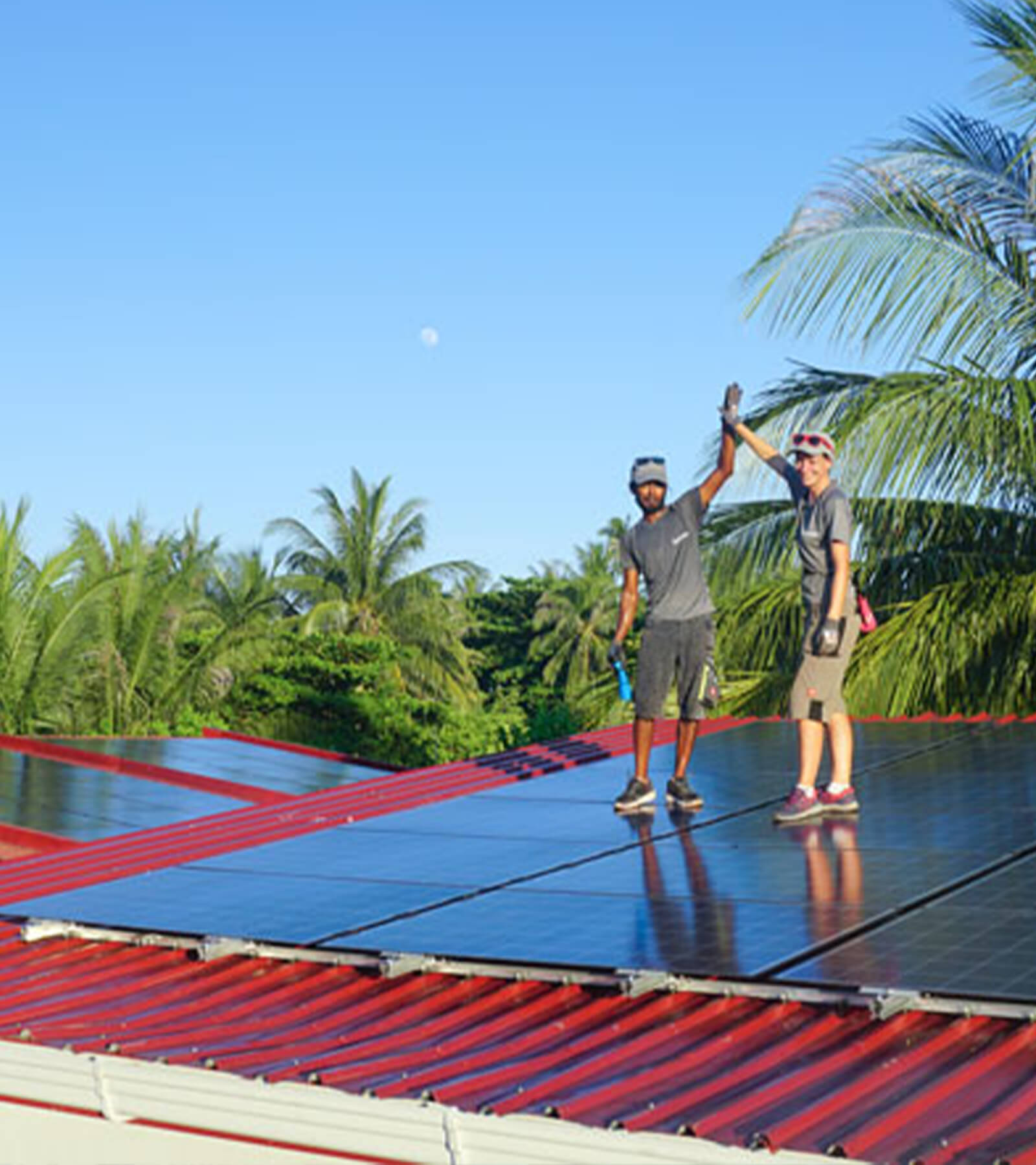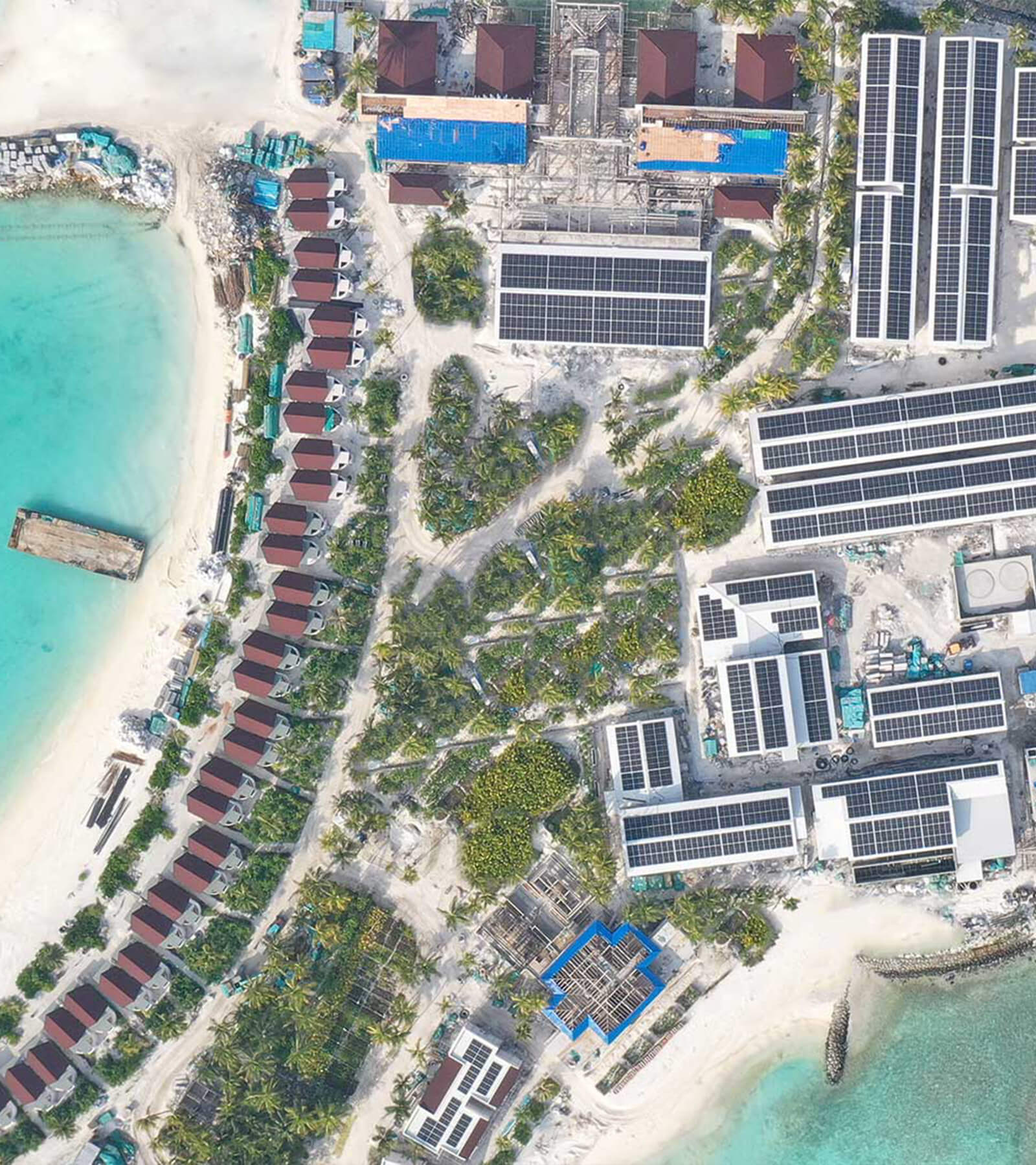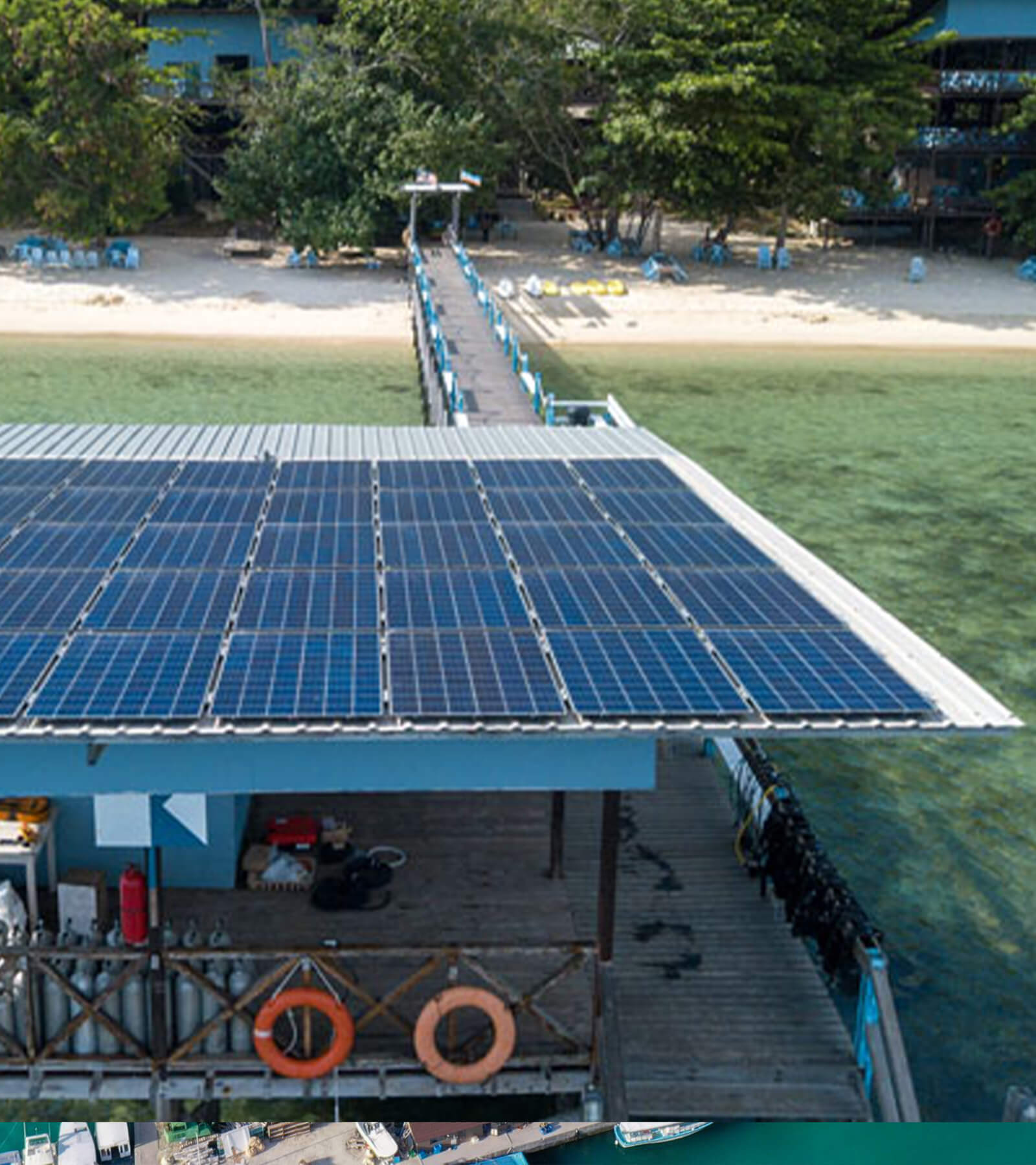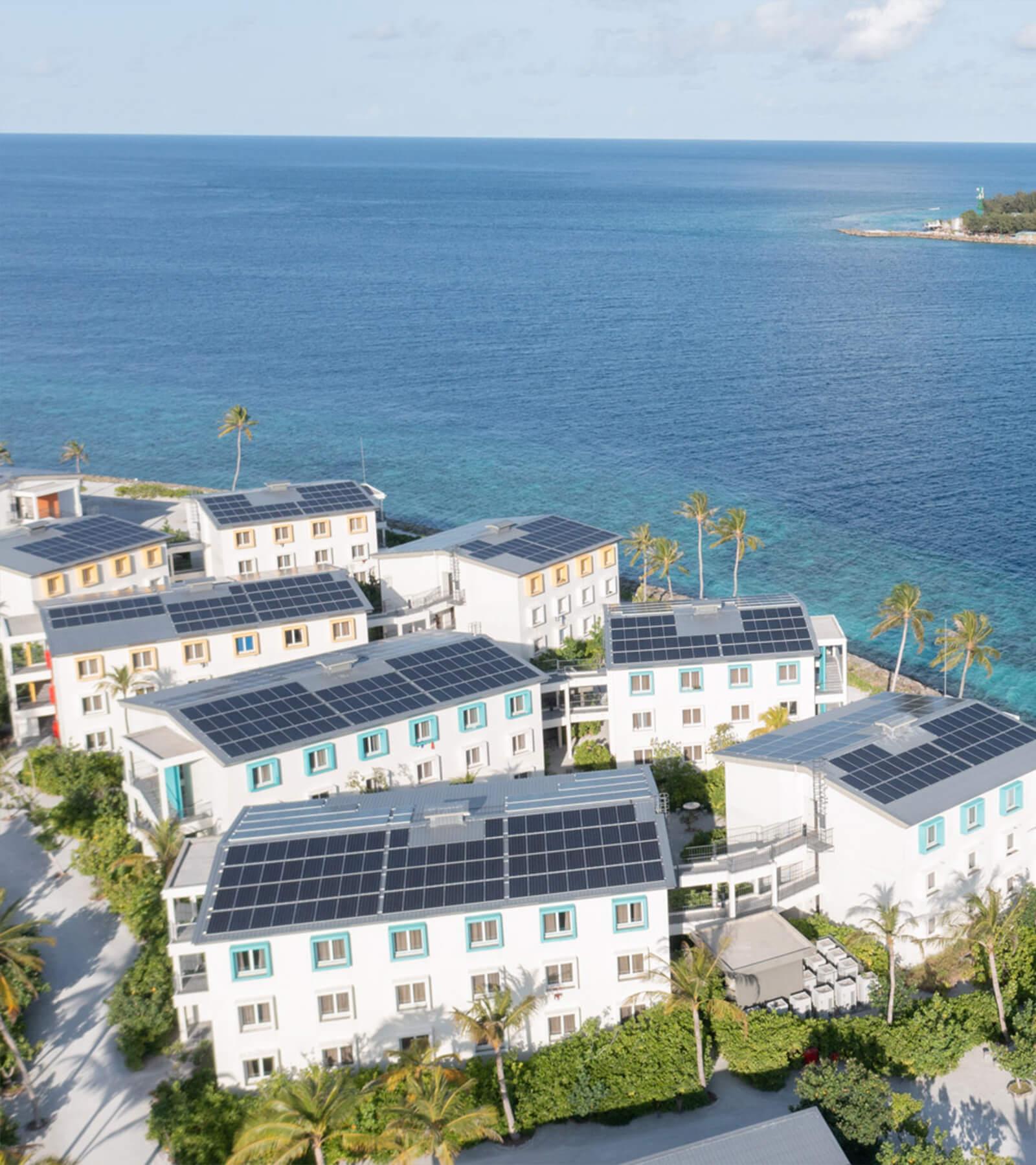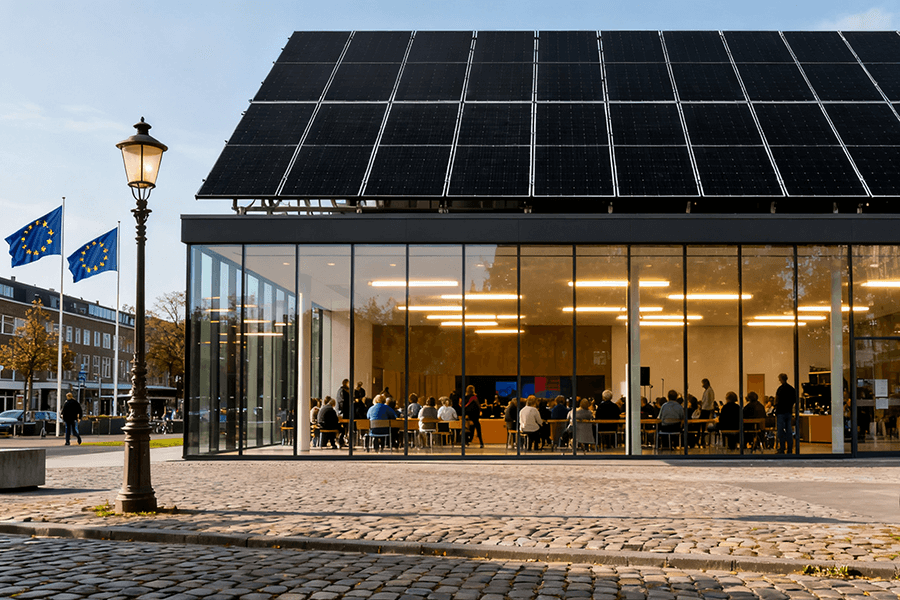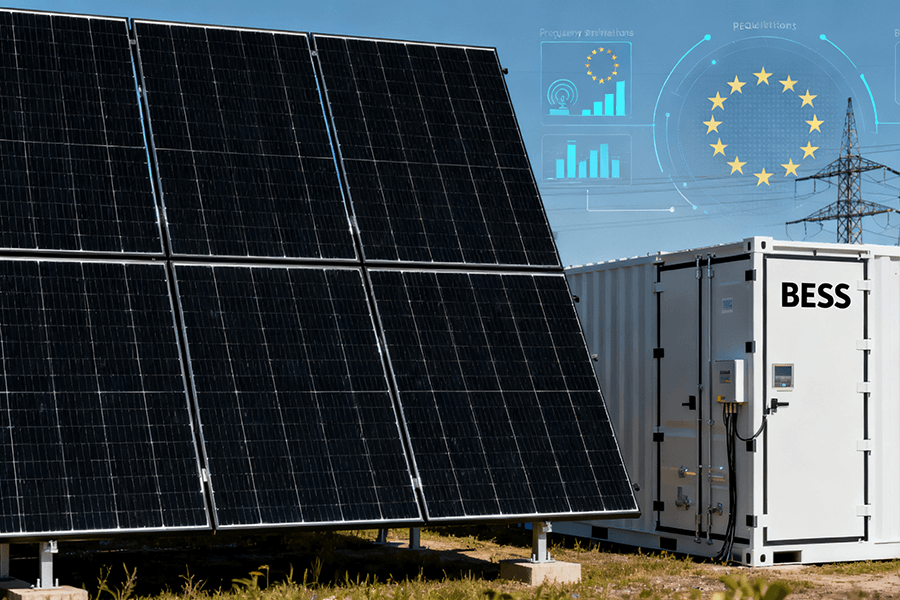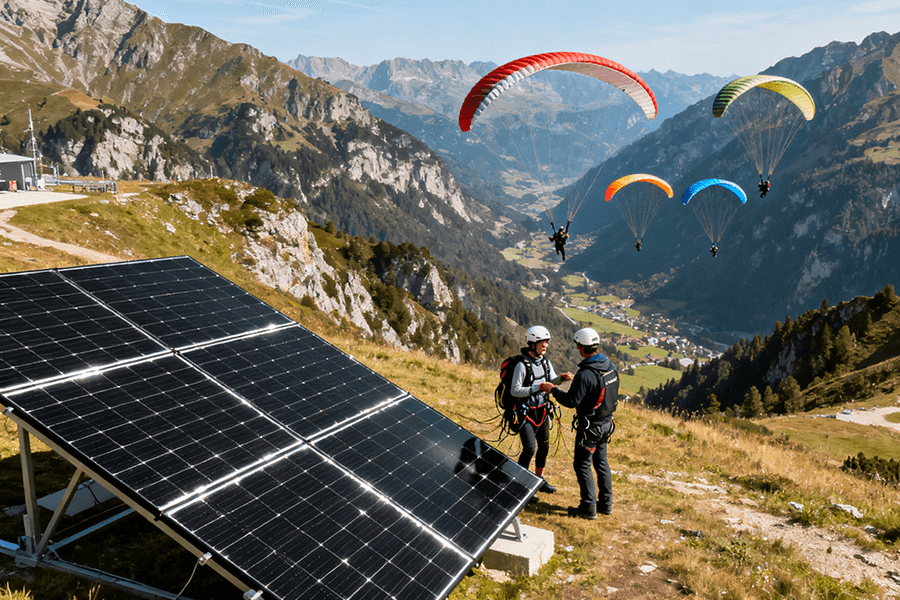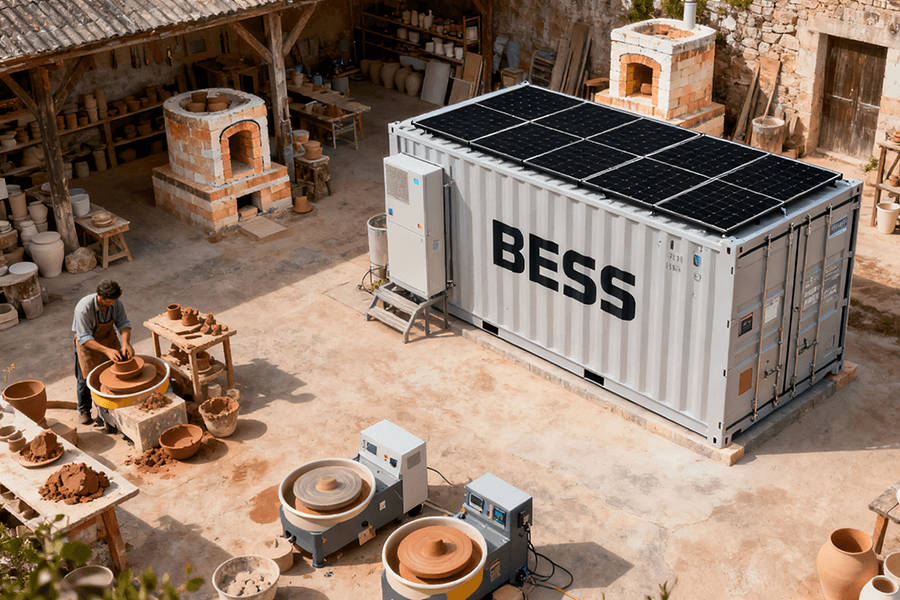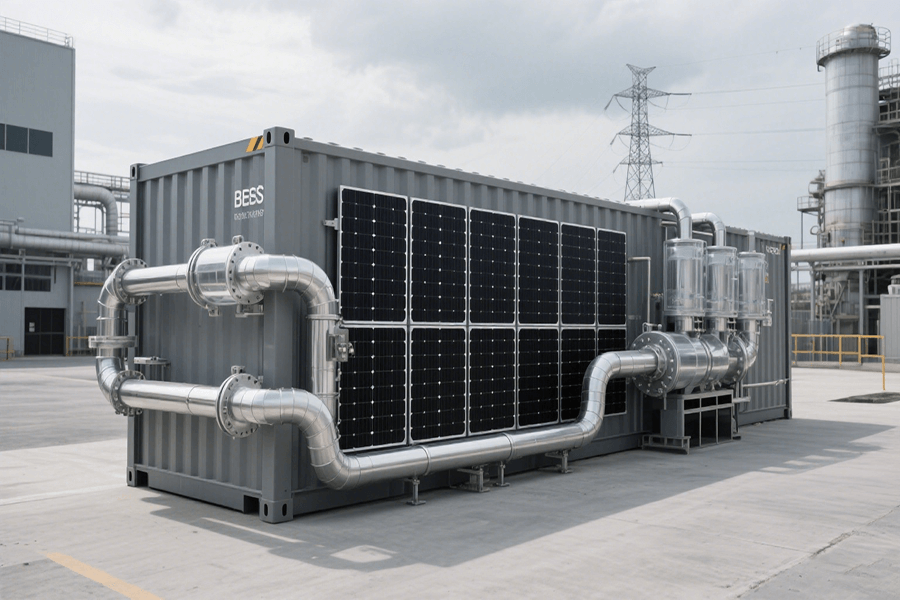
The EU’s “Fit for 55” Deadline—No More Procrastination
Let’s cut to the chase: The EU’s “Fit for 55” plan isn’t a friendly suggestion—it’s a legal mandate to slash greenhouse gas emissions by 55% by 2030 (vs. 1990 levels) and hit net-zero by 2050 (European Commission, 2021). Think of it as the continent’s “climate report card” with zero room for extra credit—only results.
The problem? Even with solar and wind power booming, residual grid emissions (from backup fossil fuels or industrial peaks) still linger like coffee stains on a white shirt. To wipe them out, the industry is turning to a dynamic duo:
- Battery Energy Storage System (BESS) Containers
- Small-scale carbon capture (CC) tech
Why pair them? Because BESS solves solar’s “daytime-only” problem, and CC mops up the last bits of CO₂—together, they’re the grid’s new cleanup crew.
How BESS + Carbon Capture Actually Works: The Synergy Secret
You know that feeling when two people team up and suddenly everything’s easier? That’s BESS and carbon capture. Here’s the play-by-play:
Solar Storage = Carbon Capture Fuel
Solar panels are the workhorses of renewable energy, generating electricity during daylight hours. However, carbon capture systems operate around the clock—after all, CO₂ emissions don’t pause for the night. This is where Battery Energy Storage System (BESS) containers shine. Acting as sophisticated solar-powered battery banks, they store surplus solar energy produced during the day and deploy it to carbon capture (CC) systems post-sunset. This seamless integration eliminates the need to rely on gas or coal-powered energy sources to operate CC technologies, effectively slashing carbon footprints.
A landmark 2024 study by the International Energy Agency (IEA) underscores the environmental and efficiency gains of this synergy. By utilizing BESS-stored solar energy to power carbon capture, the study found that fossil fuel consumption for CC operations can be reduced by 60% (IEA, 2024). To put this into perspective, it’s akin to trading in a fuel-inefficient gas-guzzling truck for a sleek, zero-emission electric vehicle—achieving the same outcome with significantly less pollution.
Perfect for Small-to-Medium Solar Farms
The solar energy landscape in the EU is diverse, with a majority of projects falling outside the gigawatt-scale category. In fact, 68% of solar farms in the EU operate within the 1–5 MW range (SolarPower Europe, 2025). The true power of integrating BESS with CC lies in its modularity. This flexibility allows operators to tailor the system size precisely to the capacity of smaller solar farms, avoiding over-engineering and optimizing cost-efficiency.
The table below details the ideal BESS container sizes and associated benefits for common EU solar farm capacities:
| Solar Farm Size (MW) | Recommended BESS Container Size | CC Capacity (Tonnes CO₂/Year) | Fossil Fuel Savings (vs. Grid-Powered CC) | Annual Cost Savings (Estimated) |
|---|---|---|---|---|
| 1 | 20ft (500 kWh) | 1,200 | 720 tonnes/year (60%) | €43,200* |
| 3 | 40ft (1.5 MWh) | 3,600 | 2,160 tonnes/year (60%) | €129,600* |
| 5 | 2x40ft (3 MWh) | 6,000 | 3,600 tonnes/year (60%) | €216,000* |
*Source: SolarPower Europe, 2025 (https://www.solarpowereurope.org/). Cost savings calculated based on average EU fossil fuel prices in 2025.
This modular approach not only streamlines energy management but also positions smaller solar farms as crucial players in the EU’s journey towards a net-zero grid by 2030. By aligning BESS and CC systems with the scale of these projects, the region can unlock significant environmental and economic value, one solar farm at a time.
Policy Perks: How This Duo Crushes the EU ETS
If “Fit for 55” represents the EU’s ambitious deadline to reduce net greenhouse gas emissions by at least 55% by 2030 compared to 1990 levels, then the EU Emissions Trading System (ETS) serves as the critical regulatory framework that quantifies and incentivizes emission reductions. As a cornerstone of the EU’s climate policy, ETS operates on a cap-and-trade principle. Under this system, companies are allocated a set number of emission allowances, each permitting the release of one tonne of carbon dioxide equivalent (tCO₂e). Firms that implement efficient decarbonization strategies and emit less than their allotted allowances can trade the surplus on the carbon market as “carbon credits,” effectively monetizing their environmental stewardship.
Integrating Battery Energy Storage Systems (BESS) with Carbon Capture (CC) technologies can transform the ETS from a compliance challenge into a lucrative revenue opportunity. To illustrate the financial viability of this synergy, consider the example of a 3 MW solar farm—a common scale for renewable energy projects across the EU:
- Annual Carbon Capture Capacity: Based on the data presented in Section 2.2, a 3 MW solar farm integrated with CC technology can capture approximately 3,600 tonnes of CO₂ per year. This significant reduction in emissions directly contributes to the EU’s climate targets.
- Carbon Credit Market Value: As of 2025, the European Energy Exchange reports an average carbon credit price of €90 per tonne. This market rate reflects the growing demand for emission allowances as companies strive to meet their ETS obligations.
- Annual Revenue Projection: Leveraging the above figures, the annual carbon credit revenue for a 3 MW solar farm with CC integration amounts to €324,000. According to the International Energy Agency (IEA, 2024), this revenue stream can offset 15–20% of the system’s initial investment costs, making the project more financially attractive and accelerating the transition to a net-zero grid.
This economic incentive structure mirrors the concept of a “carbon diet,” where entities are rewarded for reducing their environmental footprint. By investing in BESS + CC solutions, companies not only contribute to a healthier planet by lowering emissions but also enhance their bottom line, creating a win-win scenario for business sustainability and environmental protection.
Technical Deep Dive: Modular Design for Easy Adoption
Enhancing Battery Energy Storage Systems (BESS) with carbon capture technology doesn’t necessitate a complete overhaul of your existing energy infrastructure. This innovative solution is engineered as a “plug-and-play” upgrade, designed for seamless integration and maximum efficiency. Here’s a detailed breakdown of what you need to know:
Key Components and Their Specifications
| Component | Key Specs | Compatibility |
|---|---|---|
| BESS Container | – Size Options: 20ft (offering 500–1,000 kWh capacity) and 40ft (with 1.5–3 MWh capacity)- Battery Types: Lithium-ion or flow battery | Complies with all EU grid standards (EN 50530), ensuring seamless integration into existing and future European energy grids. |
| CC Attachment | – Technology: Small-scale post-combustion capture system utilizing amine-based solvents- Capacity: Capable of capturing 1–5 tonnes of CO₂ per hour | Designed for versatility, it can be retrofitted onto existing BESS setups or incorporated into new builds with ease. |
| Control System | – Functionality: AI-powered load balancing mechanism that optimizes solar storage to meet the energy demands of the carbon capture process | Effortlessly integrates with farm management software, providing a unified control and monitoring experience. |
Source: International Carbon Capture and Storage Association (ICCSA), 2024 (https://www.iccsa.org/)
This modular approach to integrating carbon capture with BESS not only simplifies the implementation process but also opens up new possibilities for sustainable energy management in the European Union, aligning perfectly with the region’s ambitious 2030 net-zero grid goals.
Cost-Benefit: The Numbers That Matter
Even the greenest tech fails if it’s too pricey. A comprehensive 5-year cost breakdown of a 3 MW solar farm—a size that represents the most common installation scale in the EU—sheds light on the economic viability of grid-powered carbon capture (CC) versus a system integrating battery energy storage systems (BESS) with solar-powered CC. This analysis, grounded in data from the International Energy Agency (IEA, 2024) and the European Energy Exchange (2025), reveals significant financial advantages for the integrated BESS + solar-powered CC solution.
| Cost/Benefit Category | Grid-Powered CC (€) | BESS + Solar-Powered CC (€) | Annual Savings (€) | 5-Year Cumulative Savings (€) |
|---|---|---|---|---|
| Upfront System Cost | 1,200,000 | 1,800,000 (includes BESS) | N/A (one-time) | -600,000 |
| Annual Fossil Fuel Cost | 180,000 | 72,000 (40% of grid cost) | 108,000 | 540,000 |
| Annual Carbon Credit Revenue | 0 | 324,000 | +324,000 | 1,620,000 |
| 5-Year Total Net Cost | 2,100,000 | 1,040,000 | N/A | 1,060,000 |
The data starkly illustrates that while the BESS + solar-powered CC system incurs a 50% higher upfront investment, it delivers substantial long-term savings. Over five years, it reduces operational costs by minimizing fossil fuel dependency and generates revenue through carbon credits, resulting in a net cost reduction of €1.06 million compared to grid-powered CC.
Pro Tip: Leveraging the EU Innovation Fund to Mitigate Upfront Costs
Navigating the initial financial hurdle is critical for adopting advanced clean technologies. The EU Innovation Fund, a €9.1 billion initiative established by the European Commission (2025), offers a strategic pathway for cost reduction. Specifically designed to support low-carbon projects, this fund earmarks significant resources for BESS + CC deployments. Successful applicants can secure grants covering up to 40% of capital expenses, effectively transforming the financial calculus of project viability.
To illustrate the impact, consider a scenario where the €1.8 million upfront cost of a BESS + solar-powered CC system benefits from the maximum 40% grant. In this case, the initial investment would decrease to €1.08 million, aligning closer to the grid-powered CC’s upfront expenditure while maintaining long-term financial advantages.
For detailed application guidelines, eligibility criteria, and access to funding opportunities, visit the official EU Innovation Fund website. This resource provides comprehensive support for developers aiming to optimize project economics and contribute to the EU’s ambitious net-zero grid goals by 2030.
Maxbo Solar: Your Partner in EU Net-Zero Success
At Maxbo Solar (www.maxbo-solar.com), we don’t just sell solar—we build solutions that fit the EU’s 2030 goals like a glove. Here’s how we support BESS + Carbon Capture integration:
- Custom Solar + BESS Packages: We design 1–5 MW solar systems paired with 20ft/40ft BESS containers, optimized for CC tech. Our 3 MW turnkey package includes panels, inverters, BESS, and AI control software—all compliant with EU standards.
- CC Compatibility: Every Maxbo BESS unit is pre-wired for small-scale CC attachments (per ICCSA specs), so you can add capture tech later without reworking your system.
- Funding Support: We help clients navigate the EU Innovation Fund application process—our team has a 75% success rate in securing grants for low-carbon projects.
Real-World Win: Our Polish Solar Farm Project
Last year, we helped a 3 MW Polish solar farm install BESS + CC. Today, they’re:
- Saving €108,000/year on fossil fuels
- Earning €324,000/year in carbon credits
- Cutting emissions by 3,600 tonnes annually
That’s not just good for the planet; it’s good business.
Final Thought
The EU’s 2030 net-zero goal isn’t impossible—it just needs the right tools. BESS Container with Carbon Capture Integration isn’t a “nice-to-have”; it’s a “need-to-have” for solar farms, industrial sites, and grid operators looking to hit targets and make money.
At Maxbo Solar, we’re ready to help you join the club. Visit www.maxbo-solar.com today to request a custom quote—let’s turn those 2030 goals into 2025 wins.

